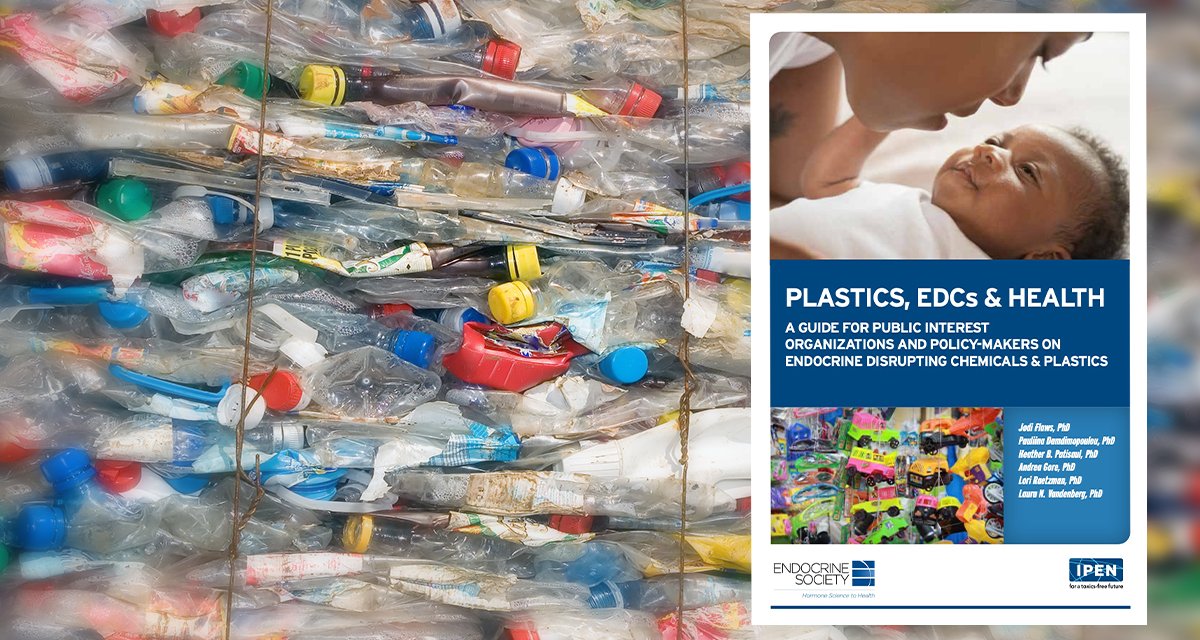Plastics contain and leach hazardous chemicals, including endocrine-disrupting chemicals (EDCs) that threaten human health. An authoritative new report from the Endocrine Society and the IPEN (International Pollutants Elimination Network) presents a summary of international research on the health impacts of EDCs and describes the alarming health effects of widespread contamination from EDCs in plastics.

EDCs are chemicals that disturb the body’s hormone systems and can cause cancer, diabetes, reproductive disorders, and neurological impairments of developing fetuses and children. The report describes a wealth of evidence supporting direct cause-and-effect links between the toxic chemical additives in plastics and specific health impacts to the endocrine system.
Conservative estimates point to more than a thousand manufactured chemicals in use today that are EDCs. Known EDCs that leach from plastics and threaten health include bisphenol A and related chemicals, flame retardants, phthalates, per- and polyfluoroalkyl substances (PFAS), dioxins, UV-stabilizers, and toxic metals such as lead and cadmium. Plastic containing EDCs is used extensively in packaging, construction, flooring, food production and packaging, cookware, health care, children’s toys, leisure goods, furniture, home electronics, textiles, automobiles and cosmetics.
Key findings in the report include:
- One hundred and forty four chemicals or chemical groups known to be hazardous to human health are actively used in plastics for functions varying from antimicrobial activity to colorants, flame retardants, solvents, UV-stabilizers, and plasticizers.
- Exposure can occur during the entire life span of plastic products, from the manufacturing process to consumer contact, recycling, to waste management and disposal.
- EDC exposure is a universal problem. Testing of human samples consistently shows nearly all people have EDCs in their bodies.
- Microplastics contain chemical additives, which can leach out of the microplastic and expose the population. They can also bind and accumulate toxic chemicals from the surrounding environment, such as seawater and sediment, functioning as carriers for toxic compounds.
- Bioplastics/biodegradable plastics, promoted as more ecological than plastics, contain similar chemical additives as conventional plastics and also have endocrine-disrupting effects.
For more information, please visit the International Pollutants Elimination Network (IPEN) and the Endocrine Society.
